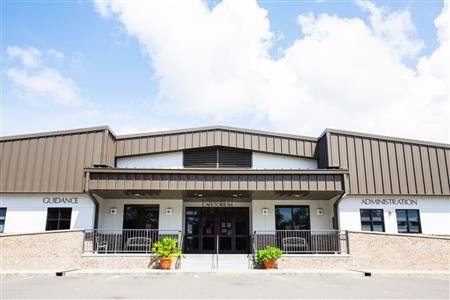School board given 2 options to ease overcrowding at Keystone Heights Elementary
FLEMING ISLAND – The school board is looking into ways to fix the population overload at Keystone Heights Elementary.
The board held its monthly workshop on June 15 and the Kasper Architect …
This item is available in full to subscribers.
Attention subscribers
To continue reading, you will need to either log in to your subscriber account, or purchase a new subscription.
If you are a current print subscriber, you can set up a free website account and connect your subscription to it by clicking here.
If you are a digital subscriber with an active, online-only subscription then you already have an account here. Just reset your password if you've not yet logged in to your account on this new site.
Otherwise, click here to view your options for subscribing.
Please log in to continueDon't have an ID?Print subscribersIf you're a print subscriber, but do not yet have an online account, click here to create one. Non-subscribersClick here to see your options for subscribing. Single day passYou also have the option of purchasing 24 hours of access, for $1.00. Click here to purchase a single day pass. |
School board given 2 options to ease overcrowding at Keystone Heights Elementary
FLEMING ISLAND – The school board is looking into ways to fix the population overload at Keystone Heights Elementary.
The board held its monthly workshop on June 15 and the Kasper Architect company presented a feasibility study of two different options to possibly fix the school’s overcrowding problem. The school is old, and its age certainly shows. The overloaded capacity doesn’t help either and Kasper’s two possible options look to tackle the problem head on in different ways.
Evaluation A calls for the district build a new elementary school on a nine-acre site near the school district. Evaluation B calls for the district to refurbish the existing elementary school into something more accommodating. The board also said those aren’t the only possible options.
Eric Kasper said the feasibility study is to act as a third-party evaluation to determine if the project is practical or even reasonable. It’s not meant to give the school board a recommendation of what to do, nor is it a complete financial analysis or master plan on what should happen. It’s simply the presentation of two options the school board could contemplate.
“There are some things to consider...with both options,” Kasper said. “Stormwater. We don’t want the facilities to flood. Building code wants it to drain positively off the site and not over public walkways. For stormwater, we’re looking at the first inch of water and where it goes. For the big 25-year flood with 24 hours of rain...that rain has to be kept on site.”
The water requirements are non-starters since both evaluations must come into water code compliance. In Evaluation A, the estimated population is 862 kindergarten through sixth grade students. The parking code requires a minimum of 69 spaces and there would be a play area of 50,946 square feet. Kasper said the play area size is small compared to other new schools and he believes a sizeable play area space, or in other words a recess space, is important for children at this age.
A retention pond would be required as well because the parcel does not currently have one. If the school district goes with Evaluation A, the current junior high students would be relocated to the current existing elementary school, which would be vacated as those elementary students would go to the new elementary school.
Evaluation A carries an estimated price tag of $23 million. Kasper said its pros are it would be less disruptive to students in school, it would have instant results and it would bring students and faculty new facilities. The cons, however, are that it’s significantly more expensive to build a new school than to retrofit an existing building. A pedestrian bridge would need to be built between the new elementary school and the junior high as well so that students can access the shared athletic field and other facilities.
Evaluation B would call for the district to rebuild an existing campus on the current property. It would come with three new buildings and additional green space, Kasper said. It would feature the same drop-off capacity, the same school population and the same parking spaces.
The main problem Kasper said comes with Evaluation B is that it would be very distracting to students and parents. It would be years of work on buildings on campus and that could be disruptive to teaching and learning, he said. He believes the benefits outweigh the problems, though – especially the larger play space and the $15 million price tag, which is $7.7 million cheaper than Evaluation A.
“I think the feasibility study did a great job of narrowing things down,” Superintendent David Broskie said.
The school board is anxious to get the ball rolling for Keystone Heights. Broskie pointed out that it all comes down to finances. Because the meeting was just a workshop, no official decision or vote was made in regard to the evaluation.
The school board’s next meeting will be a regular school board meeting on June 24 at 6 p.m. at the Teacher Inservice Center on the campus of Fleming Island High.








